Exploring Ding Kiln Site: Unveiling the Secrets of China’s Imperial Porcelain

An Essential Guide to Visiting Ding Kiln Site
In This Guide
- An Essential Guide to Visiting Ding Kiln Site
- The Rich History and Legends of Ding Kiln Site
- Main Highlights: What You Absolutely Can’t Miss
- Planning Your Visit: A Practical Guide
- Tickets: Prices, Booking, and Tips
- How to Get There: A Complete Transportation Guide
- Local Cuisine and Accommodation Nearby
- Frequently Asked Questions
- Final Thoughts on Your Trip
Discover the Heart of China’s Porcelain Legacy at Ding Kiln Site
Nestled in the picturesque town of Jingdezhen, often heralded as the “Porcelain Capital” of China, the Ding Kiln Site (定窑遗址) stands as a testament to the rich heritage of Chinese ceramic craftsmanship. This ancient site dates back to the Tang Dynasty (618-907 AD) and embodies the spirit of a time when porcelain was not merely a craft but an art form revered by emperors and connoisseurs alike.
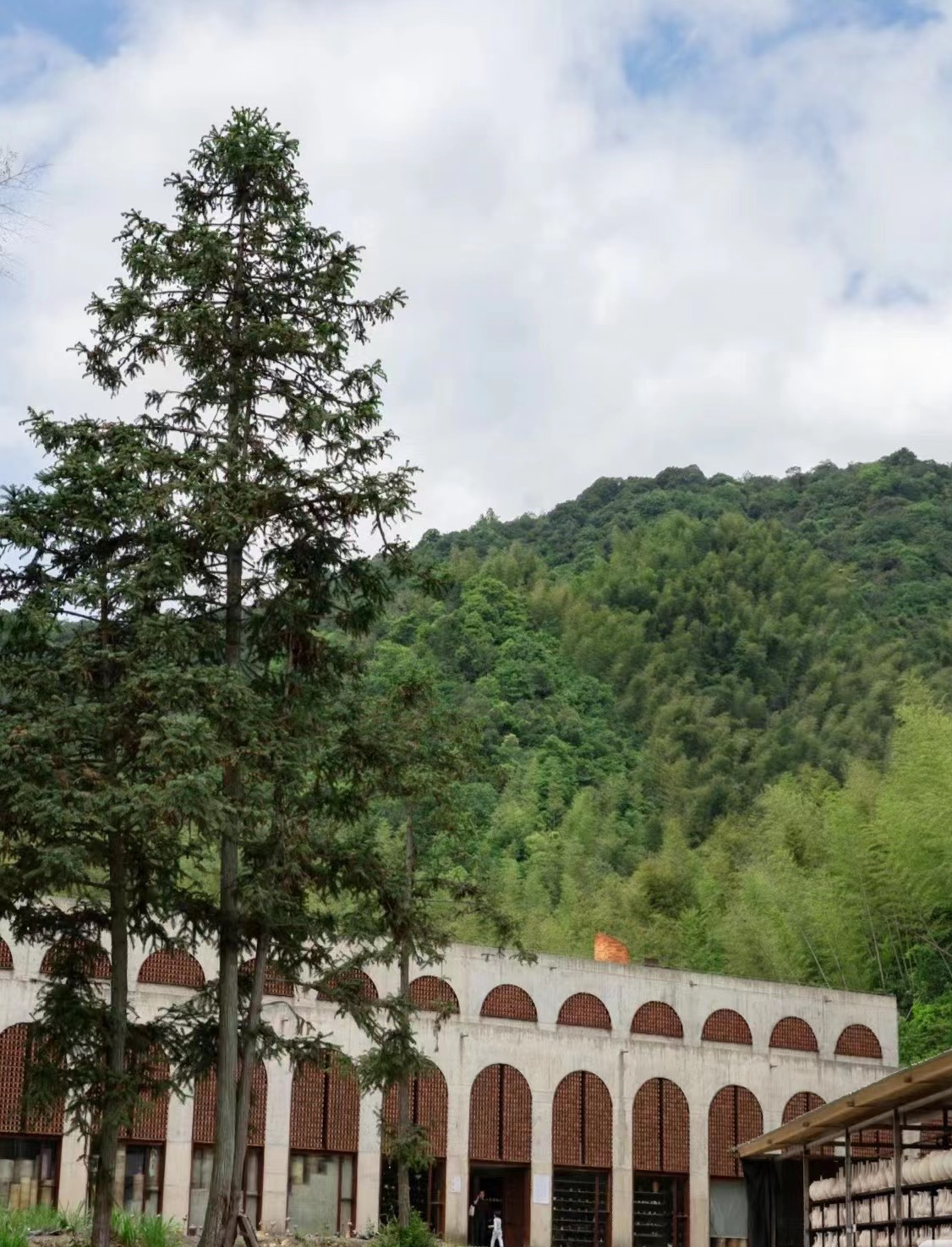
Ding Kiln Site.
As you approach the Ding Kiln Site, prepare to be transported back through centuries of history. The area’s serene landscapes, punctuated by historical kilns and lush greenery, evoke a sense of tranquility that complements the artistic journey ahead. Here, the story of porcelain unfolds in the very bricks of the ancient kilns, where artisans once toiled to create exquisite pieces that graced the tables of royalty.
What to Expect
Visitors to the Ding Kiln Site can immerse themselves in several captivating experiences:

Ding Kiln Site.
- Historical Insights: Discover the evolution of Ding porcelain, renowned for its delicate white body and elegant glaze, widely celebrated for its aesthetics and functionality.
- Architectural Marvels: Explore the intricacies of ancient kiln construction, featuring hyperbolic shapes and handmade bricks designed to withstand the intense heat of the firing process.
- Interactive Experiences: Engage with skilled artisans who continue the legacy of traditional wood-fired pottery, offering workshops that allow you to create your own piece of history.
Practical Information
- Location: The Ding Kiln Site is located in Qiancheng Village, Xianghu Town, Fuliang County, Jingdezhen City, Jiangxi Province.
- Admission Fee: Approximately 30 RMB per person, with free entry for children under 10.
- Opening Hours: Open daily from 8:00 AM to 6:00 PM (closed on Tuesdays).
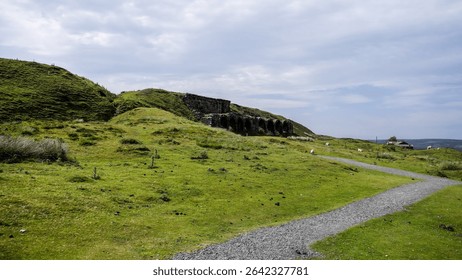
Ding Kiln Site.
Tips for Your Visit
- Timing Your Visit: If you can, plan your trip around a kiln firing event, where you might witness the ancient craft in action—an experience not to be missed.
- Photography Opportunities: The interplay of light and shadow within the kiln structures offers stunning photographic moments, especially during the golden hours of sunrise and sunset.
- Nearby Attractions: While exploring Ding Kiln, consider visiting other cultural sites in Jingdezhen, such as the Imperial Kiln Museum and the China Ceramic Museum, to deepen your understanding of this vibrant ceramic culture.
A visit to the Ding Kiln Site is not just a journey into the past; it is an opportunity to connect with the heart of Chinese artistry and tradition. Whether you are a history enthusiast, an art lover, or simply a curious traveler, the Ding Kiln Site promises an enriching experience that will linger in your memory long after you leave.

Ding Kiln Site.
The Rich History and Legends of Ding Kiln Site
The Rich History and Legends of the Ding Kiln Site
Nestled in the heart of Jingdezhen, often dubbed the “Porcelain Capital” of China, the Ding Kiln Site (定窑遗址) is not merely a historical relic; it is a vibrant testament to centuries of craftsmanship, cultural evolution, and artistic expression. Renowned for its exquisite white porcelain, the Ding Kiln has its roots deeply embedded in the Song Dynasty (960-1279 AD), a period often celebrated as the golden age of Chinese ceramics.
A Glimpse into History
The Ding Kiln, established during the Northern Song Dynasty, is famed for producing high-quality white wares that were characterized by their translucent glaze and delicate artistry. The name “Ding” translates to “tripod,” referencing the traditional three-legged cooking vessels that were among the kiln’s earliest products. As the kiln flourished, it became a center for both the production and innovation of porcelain, influencing styles that would resonate throughout Chinese history.

Ding Kiln Site.
Key Historical Highlights:
– Song Dynasty Origins: The Ding Kiln was initially established in the late 10th century and reached its height of production during the 11th and 12th centuries.
– Royal Patronage: It is said that the Ding Kiln’s porcelain was favored by the imperial court, which sought out its artistry for use in ceremonial and everyday items.
– Cultural Exchange: The kiln played a pivotal role in the exchange of artistic ideas, techniques, and materials, not only within China but also with neighboring cultures, leading to a unique blend of styles that characterized the time.
Legends of the Kiln
As with many historical sites, the Ding Kiln is surrounded by a tapestry of legends that speak to its cultural significance and the mystique of porcelain-making.
Notable Legends:
– The Spirit of the Kiln: Local folklore tells of a spirit that resides within the kiln, believed to bless the artisans with creativity and skill. It is said that before each firing, craftsmen would offer incense and prayers, seeking the spirit’s favor for a successful batch.
– The White Porcelain Dream: A myth recounts that the first batch of white porcelain was born from a dream where a master potter saw a vision of a beautiful, luminous moon glistening on the water. Inspired, he sought to recreate that ethereal beauty in his work, giving birth to the iconic Ding white porcelain.
– The Legend of the Five Elements: The kiln’s unique construction, utilizing principles of balance and harmony, is said to embody the ancient Chinese philosophy of the Five Elements. The melding of fire and earth during the firing process is believed to create not just ceramics, but vessels imbued with spiritual energy.
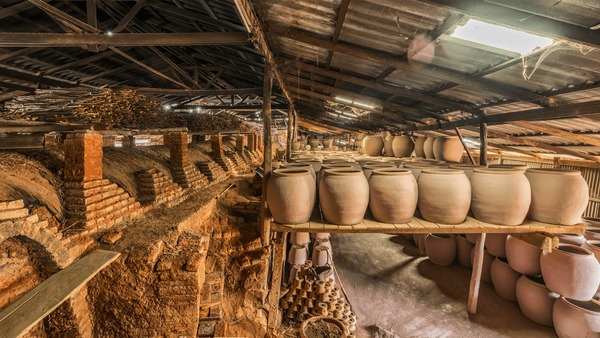
Ding Kiln Site.
The Kiln Today
Today, the Ding Kiln Site stands as both a cultural heritage site and a vibrant hub for artists and craftsmen. It has become a focal point for those interested in traditional Chinese ceramics, offering workshops and exhibitions that celebrate the ancient techniques of porcelain-making. Visitors can explore the serene kiln grounds, witness the firing process, and even try their hand at crafting their own pieces.
Visiting the Site:
– Exhibitions and Workshops: Engage with local artisans, learn about the art of porcelain-making, and participate in hands-on experiences.
– Architectural Beauty: The kiln itself is a marvel of design, blending traditional craftsmanship with modern aesthetics, making it a perfect spot for photography enthusiasts.
– Cultural Significance: The site is not only a place to learn about ceramics but also a space for reflection on the enduring legacy of Chinese craftsmanship and artistic innovation.
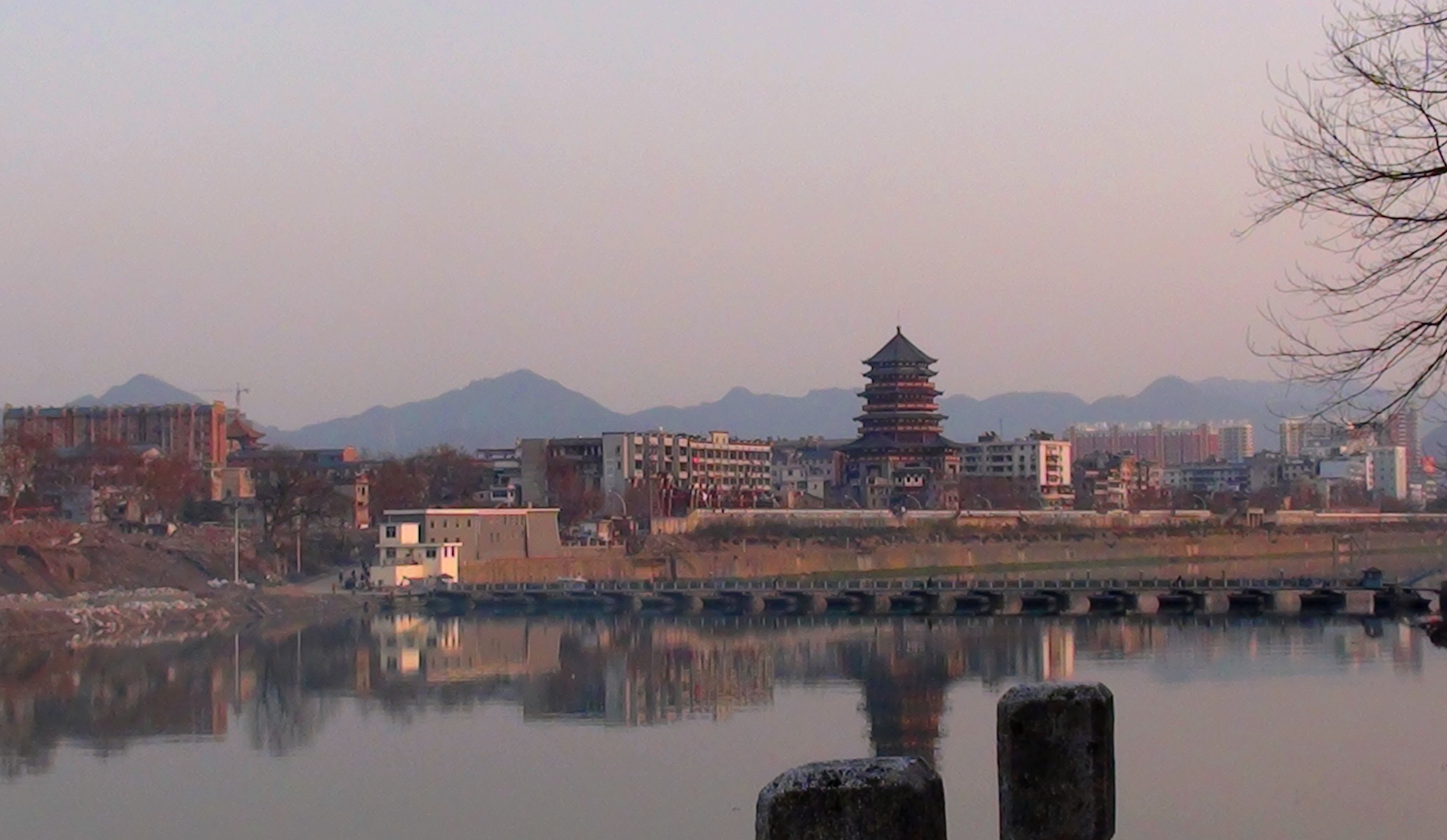
Ding Kiln Site.
In summary, the Ding Kiln Site is a profound intersection of history, legend, and artistry. For travelers seeking to immerse themselves in the rich tapestry of Chinese culture, a visit to this sacred site promises not just an educational experience but also a journey through time, where the spirit of porcelain continues to resonate with beauty and grace.
Main Highlights: What You Absolutely Can’t Miss
When exploring the rich tapestry of Chinese history and culture, the Ding Kiln Site in Jingdezhen is an unmissable destination that embodies the artistry and craftsmanship that have defined this region for centuries. Here’s a curated guide to the main highlights that you simply cannot overlook during your visit.

Ding Kiln Site.
Architectural Marvel: Bingding Wood Kiln
Location: Qiancheng Village, Xianghu Town, Fuliang County, Jingdezhen City
Admission: 30 RMB per person (free for children under 10)
Hours: 08:00 – 18:00 (Closed on Tuesdays)
The Bingding Wood Kiln stands as a testament to the timeless tradition of porcelain making in Jingdezhen. Designed with minimalistic Wabi-Sabi aesthetics, the kiln features a stunning hyperbolic structure that captures the interplay of light and shadow. The kiln’s name symbolizes the harmony of yin and yang, with “Bing” representing the blazing yang fire akin to sunlight and “Ding” embodying the gentle yin fire reminiscent of moonlight.
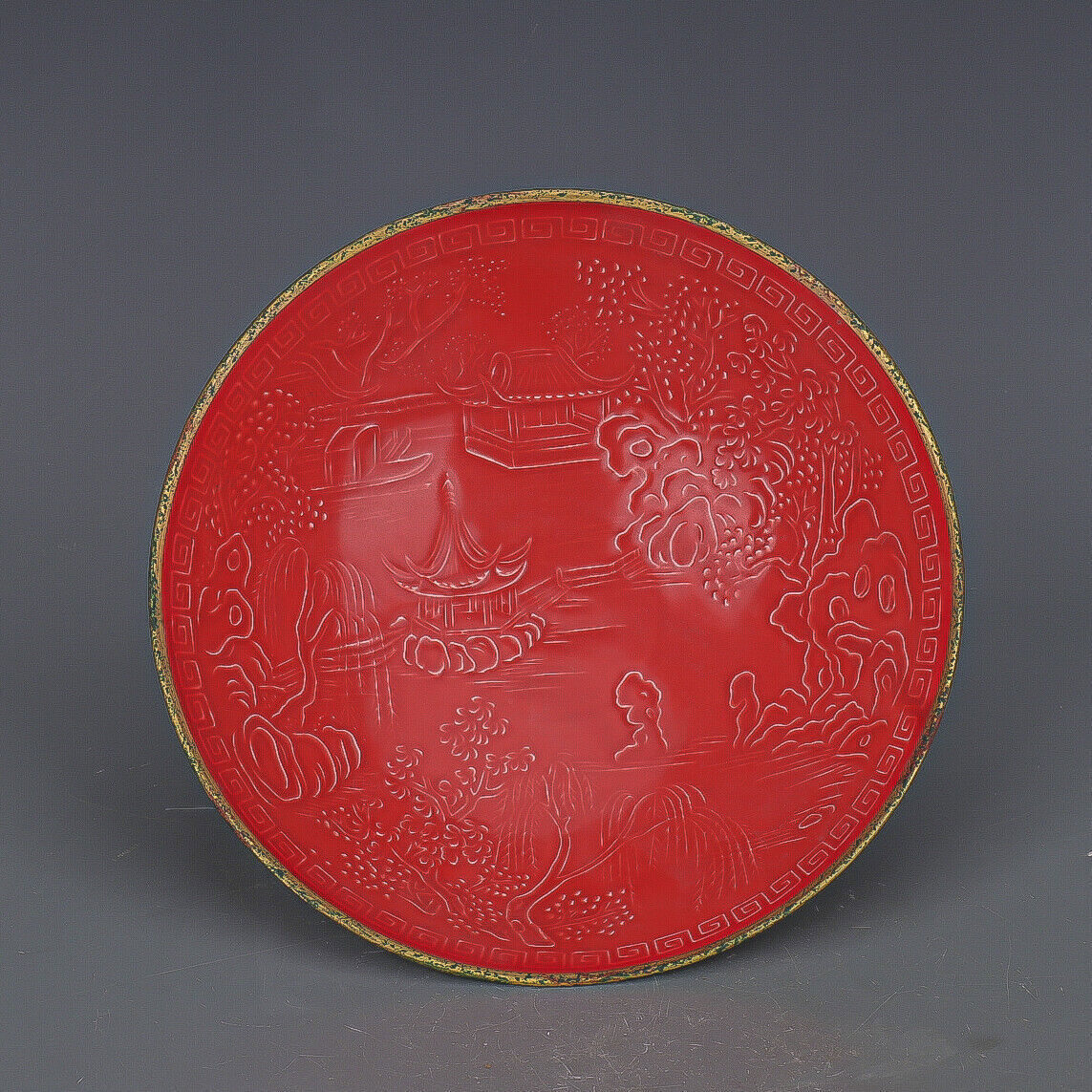
Ding Kiln Site.
Visitors can marvel at the kiln’s unique construction, which utilizes handmade kiln bricks capable of withstanding extreme temperatures ranging from 1100°C to 1300°C. The kiln hall serves multiple purposes—from filling and igniting the kiln to showcasing art exhibits, creating a serene atmosphere that feels almost sacred. Keep an eye on the firing schedule; if you’re lucky, you might witness a wood-firing session that breathes life into this ancient craft.
Cultural Immersion: The Imperial Kiln Museum
Location: Near the Jingdezhen North Railway Station
Admission: Free (reservation required one day in advance)
Hours: 08:00 – 24:00 (Closed on Mondays)
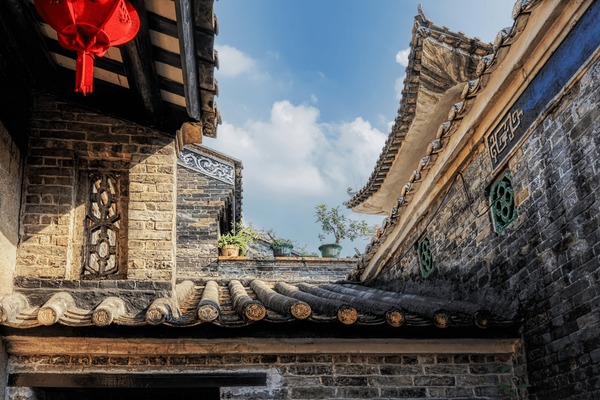
Ding Kiln Site.
Don’t miss the chance to visit the Imperial Kiln Museum, an architectural masterpiece that resembles a traditional kiln. This museum showcases the history of porcelain making, featuring over 20,000 pieces spanning various dynasties. It’s a fantastic opportunity to delve into the intricate art of ceramics while surrounded by awe-inspiring architecture, especially beautiful during the magical blue hour at dusk.
Artistic Exploration: China Ceramic Museum
Location: Jingdezhen
Admission: Free (reservation required in advance)
Hours: 09:00 – 17:00 (Closed on Mondays)
As the first large-scale ceramic-themed art museum in China, the China Ceramic Museum is a must-visit for enthusiasts and casual visitors alike. With seven floors dedicated to porcelain, including the popular “Speechless Buddha” exhibit, you’ll gain insight into the evolution of Chinese ceramics. The museum offers a comprehensive overview of the history and cultural significance of this beloved art form.
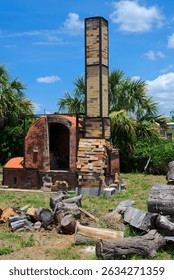
Ding Kiln Site.
Enchanting Experiences: Yaoli Ancient Town
Admission: Free
Hours: 08:00 – 17:00
A visit to the nearby Yaoli Ancient Town offers a delightful escape into Huizhou-style architecture and picturesque landscapes. Known for its poetic ambiance, especially after rainfall, this ancient town invites you to explore its charming streets and indulge in local culinary delights. It’s an idyllic spot to unwind and take in the surrounding natural beauty.
Unique Shopping: Tao Bo City
Location: Jingdezhen
Admission: Free
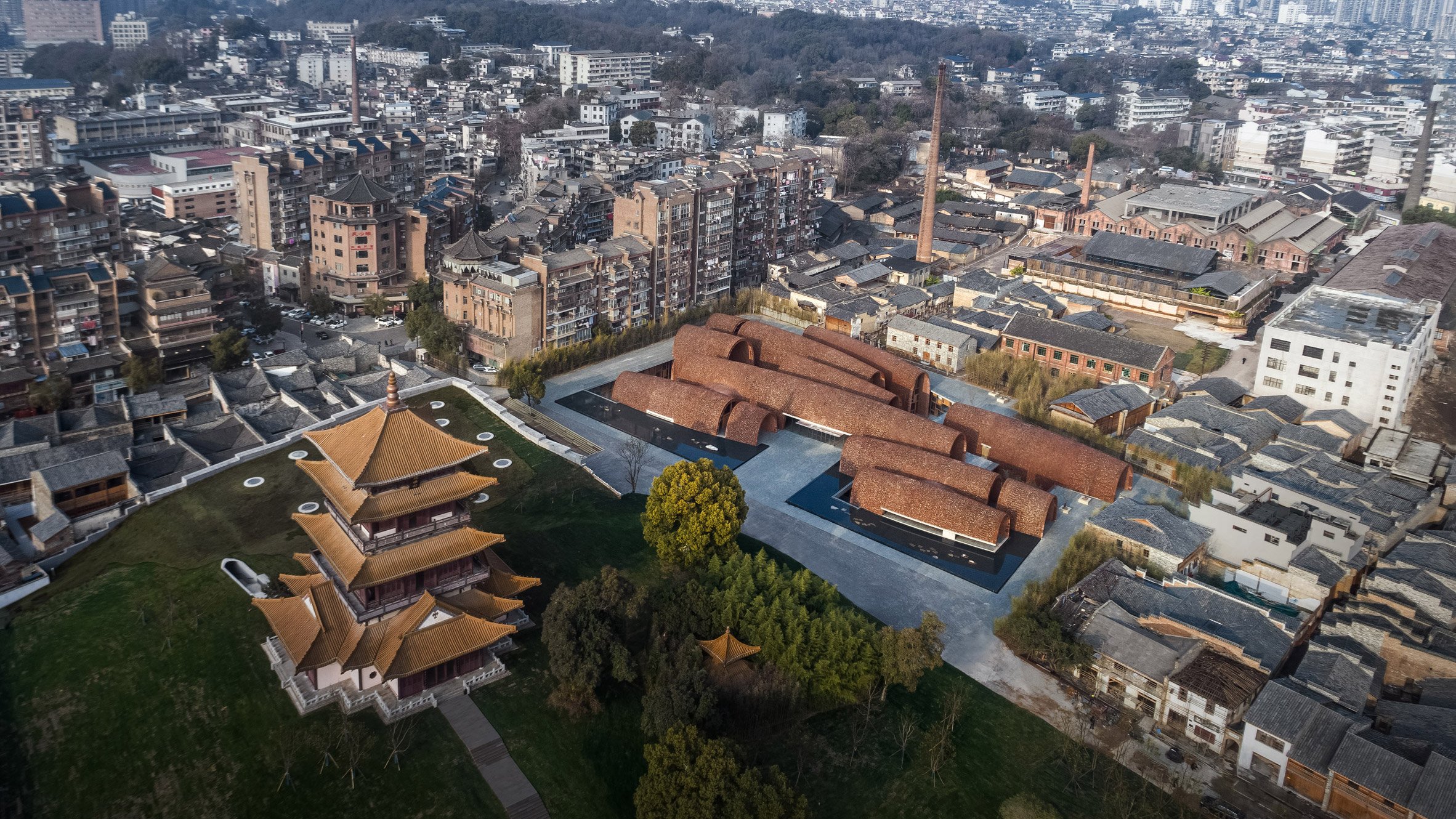
Ding Kiln Site.
For those seeking the perfect souvenir or a unique gift, Tao Bo City is a treasure trove of exquisite porcelain. From tableware to intricately designed tea sets, each piece tells a story. The upscale offerings here are ideal for personal use or as thoughtful gifts, and the tea art space captivates with its hand-carved items.
Culinary Delights: Fuzhou Lane
Location: Jingdezhen
Admission: Free
After a day of exploration, indulge in local delicacies at Fuzhou Lane, where you can savor authentic dishes like beef bone noodles and mixed jelly noodles. The vibrant atmosphere and delicious food make this a perfect spot to recharge.
Final Thoughts
The Ding Kiln Site and its surrounding attractions present an enriching experience that melds history, culture, and artistry. Whether you are an avid ceramic enthusiast or a casual traveler, the beauty and craftsmanship of Jingdezhen’s porcelain-making heritage are sure to leave an indelible mark on your journey through China’s cultural landscape. Make sure to set aside ample time to immerse yourself in this captivating world!
Planning Your Visit: A Practical Guide
Planning Your Visit to Ding Kiln Site (定窑遗址)
Ding Kiln Site, located in Jingdezhen, Jiangxi Province, is a treasure trove of Chinese porcelain history, attracting those keen to explore the rich tapestry of Chinese culture and craftsmanship. Here’s your essential guide to making the most of your visit.
Getting There
-
By Air: The nearest major airport is Jingdezhen Luojia Airport, which connects to several cities in China. From the airport, you can take a taxi or book an airport transfer.
-
By Train: Jingdezhen North Railway Station is well-connected to major cities like Nanchang and Shanghai. Once you arrive, consider taking a tourist shuttle or a taxi to reach the Ding Kiln Site.
-
Local Transportation: Renting an electric bike is a popular option for navigating the area, giving you the flexibility to explore at your own pace. Taxis can be hard to find, so plan accordingly.
Admission and Opening Hours
-
Admission Fee: 30 RMB per person; free for children under 10.
-
Opening Hours:
- Daily: 08:00 AM – 06:00 PM
- Closed: Tuesdays
Recommended Duration
Allocate 1 to 2 hours to fully appreciate the kiln’s architecture and exhibitions. If you are an enthusiast of photography or architecture, you might wish to linger longer to capture the stunning interplay of light and shadow.
What to See and Do
-
Bingding Wood Kiln: The kiln itself is a marvel of design, embodying the concept of yin and yang through its construction. The minimalist Wabi-Sabi style creates an inviting atmosphere for contemplation and creativity.
-
Exhibition Spaces: Explore the kiln hall and side corridors, which often showcase works from both traditional artisans and contemporary ceramic artists. Don’t forget to check for any scheduled firing sessions, as witnessing the firing process can be a unique experience.
-
Photography Opportunities: The interplay of light within the kiln and its surroundings makes it a paradise for photographers. The architecture is reminiscent of Tadao Ando’s work, characterized by stark lines and serene environments.
Nearby Attractions
While in Jingdezhen, consider visiting these nearby sites:
-
Imperial Kiln Museum: A striking red brick structure that’s architecturally award-winning, this museum showcases the history of imperial porcelain.
-
China Ceramic Museum: The first large-scale ceramic-themed museum in China, featuring over 20,000 pieces of porcelain from various eras.
-
Yaoli Ancient Town: Experience Huizhou-style architecture and local culture in this quaint town, often described as poetic after rain.
Accommodation
For a comfortable stay, consider these options:
-
Bed and Breakfasts: Offering local charm and hospitality, these can provide a more personalized experience.
-
Hotels: The Grand Hyatt Jingdezhen is a luxurious option with convenient access to the city’s attractions.
Dining Recommendations
Jingdezhen is not only about porcelain; it offers a delightful culinary experience. Be sure to try:
-
Fuzhou Lane Snack Street: A vibrant spot for local delicacies, including beef bone noodles and cold noodles.
-
Local Restaurants: Explore dishes like kiln worker’s chicken soup and mixed jelly noodles for a taste of regional cuisine.
Tips for a Smooth Visit
-
Plan Ahead: Make reservations for popular attractions and dining spots to avoid long waits.
-
Comfortable Attire: Wear comfortable shoes, as you will likely be walking a lot on stone slab paths.
-
Fragile Items: If you purchase ceramics, bring sealable bags to protect your treasures during travel.
-
Cultural Respect: Be mindful of the local customs and the significance of the sites you are visiting.
With this guide in hand, you are poised for an enriching experience at the Ding Kiln Site and the surrounding attractions. Immerse yourself in the ancient art of porcelain-making and the serene beauty of Jingdezhen!
Tickets: Prices, Booking, and Tips
Visiting the Ding Kiln Site (定窑遗址) is a unique opportunity to immerse yourself in the rich history and craftsmanship of Chinese porcelain. Here’s what you need to know about tickets, pricing, and some helpful tips to enhance your visit.
Admission Prices
- Ticket Price:
- 30 RMB per person (approximately $4.50 USD)
- Free for children under 10 years old.
Booking Information
- Reservation: Currently, there is no advanced booking required for entry. You can simply purchase your ticket at the entrance upon arrival.
- Hours of Operation:
- Open: 08:00 AM – 06:00 PM
- Closed: Tuesdays
Suggested Visit Duration
Plan to spend 1 to 2 hours at the Ding Kiln Site to fully appreciate the architecture, exhibitions, and the serene atmosphere that surrounds this historical landmark.
Location
The Ding Kiln Site is located in Qiancheng Village, Xianghu Town, Fuliang County, Jingdezhen City, Jiangxi Province. It is advisable to check local maps for the best routes to reach this site, as it’s somewhat off the typical tourist path.
Tips for Your Visit
-
Photography: The minimalist Wabi-Sabi style of the kiln and its surroundings is incredibly photogenic, especially during midday when natural light enhances the beauty of the space. Bring your camera to capture the stunning interplay of light and architecture.
-
Experience the Firing Process: If you are fortunate, you might witness a wood-firing session. This event occurs approximately every three months and lasts several days. It’s a rare opportunity to see the traditional craftsmanship in action, so inquire locally to find out if any firings are scheduled during your visit.
-
Local Amenities: While visiting, consider exploring nearby attractions such as the Imperial Kiln Museum and the China Ceramic Museum, both of which offer complimentary admission but may require advanced reservations. This can enrich your cultural experience in Jingdezhen.
-
Transportation: Renting an electric bike can be a convenient way to navigate the city and its surroundings, especially since taxis can be hard to find. This mode of transportation also allows you to enjoy the scenic views at your own pace.
-
Dining Options: After your visit, enjoy local delicacies at nearby eateries. Fuzhou Lane is a popular spot for sampling Jingdezhen’s street food, offering a variety of affordable and delicious dishes.
By planning ahead and following these tips, your visit to the Ding Kiln Site can be both enlightening and enjoyable, allowing you to appreciate the profound heritage of Chinese porcelain craftsmanship.
How to Get There: A Complete Transportation Guide
Discovering the Ding Kiln Site: Your Transportation Guide
Visiting the Ding Kiln Site (定窑遗址) in Jingdezhen, known as the “Porcelain Capital” of China, is an exciting journey into the heart of Chinese ceramic history. With its unique blend of culture and natural beauty, reaching this historic site is a rewarding experience for any international traveler. Here’s how you can get there with ease:
1. Arriving in Jingdezhen
By Air:
– Nearest Airports: The closest major airport is Jingdezhen Luojia Airport (JGD), which offers domestic flights from major cities like Beijing, Shanghai, and Guangzhou. From the airport, you can hire a taxi or book a private transfer to reach the Ding Kiln Site.
– Alternative Airports: If you can’t find a suitable flight to Jingdezhen, consider flying into Nanchang Changbei International Airport (KHN), about 200 kilometers away. From there, you can take a train or bus to Jingdezhen.
By Train:
– High-Speed Trains: Jingdezhen North Railway Station offers high-speed rail services. You can catch a train from Shanghai, Nanjing, or Hangzhou, with travel times varying from 4 to 6 hours depending on your departure city.
– Local Transport: Upon arrival at Jingdezhen North Railway Station, you can take a taxi or a local shuttle bus to the Ding Kiln Site.
2. Getting to the Ding Kiln Site
From Jingdezhen City Center:
– Taxi: The quickest and most convenient option is to hire a taxi. The ride from the city center to the Ding Kiln Site takes approximately 30 minutes and costs around 50-70 RMB.
– Public Transport: If you’re looking for a budget-friendly option, take a local bus to the Fuliang County area. Buses run frequently, and the fare is minimal (around 5-10 RMB). Be sure to check the bus schedules as they can vary.
From Jingdezhen North Railway Station:
– Shuttle Services: Some local hotels and tour operators offer shuttle services to popular attractions, including the Ding Kiln Site. Check with your accommodation for availability.
– Ride-Hailing Apps: Apps like Didi Chuxing (the Chinese equivalent of Uber) are widely used in the area. Simply download the app, set your destination, and enjoy a comfortable ride to the site.
3. Transportation Tips
- Electric Bikes: For the more adventurous traveler, consider renting an electric bike to explore Jingdezhen and its surroundings. This option not only allows you to enjoy the scenery but also provides flexibility to visit nearby attractions at your own pace.
- Walking: The Ding Kiln Site is located in a scenic area where walking is pleasant. If you’re staying nearby, it’s a great way to soak in the local culture and architecture.
- Travel During Off-Peak Hours: To avoid crowds, consider visiting during weekdays or early mornings, especially if you plan to take public transport.
4. Accessibility Considerations
While most transportation options are accessible, it’s advisable to check with providers regarding specific needs, especially if traveling with mobility devices. Local taxis are generally accommodating, but it’s best to confirm accessibility features in advance.
Conclusion
Reaching the Ding Kiln Site is an integral part of your journey into the rich heritage of Chinese porcelain. Whether you arrive by air or rail, and choose to explore by taxi, bus, or bike, you’ll find that the adventure of getting there is as delightful as the destination itself. Enjoy your exploration of this captivating historical site and embrace the artistry that has made Jingdezhen renowned worldwide!
Local Cuisine and Accommodation Nearby
When visiting the Ding Kiln Site in Jingdezhen, immersing yourself in the local cuisine and securing comfortable accommodation can significantly enhance your experience. This region, known as the “Porcelain Capital” of China, not only offers a rich historical context but also a delightful culinary scene and a variety of lodging options that cater to different tastes and budgets.
Local Cuisine
Jingdezhen’s food scene is as diverse and vibrant as its porcelain artistry. Here are some local culinary delights you should not miss:
-
Cold Noodles (Taojie Cold Noodles): A refreshing dish perfect for the warmer months, these noodles are served chilled with a variety of condiments. You can find them at many local eateries, especially in Fuzhou Lane.
-
Beef Bone Noodles: A local favorite, this hearty dish features tender beef and rich broth, making it a perfect meal after a day of exploring the kiln sites. Try it at Fan’s Fuzhou Lane for an authentic experience.
-
Mixed Jelly Noodles: Known for their texture and flavor, these noodles are a popular street food option. They are often preferred by locals over beef bone noodles.
-
Kiln Worker’s Chicken Soup: Visit Xunwei Sanbao for this comforting dish, traditionally enjoyed by kiln workers. It’s hearty and full of flavor, providing insight into the local culinary heritage.
-
Tan Po Dumpling Cakes: For a unique snack, try these fried dough sticks wrapped in mochi. They offer a delightful combination of textures and flavors, perfect for a quick bite on the go.
Accommodation Options
Jingdezhen offers a range of accommodations, from luxurious hotels to cozy guesthouses, ensuring a pleasant stay for all travelers. Here are some recommended places to rest your head:
-
Grand Hyatt Jingdezhen: For those seeking luxury, this hotel offers modern amenities and stunning views, making it an excellent base for exploring the area. Its proximity to major attractions allows for convenient day trips.
-
Taoxichuan Creative Quarter: This area features several boutique hotels and bed-and-breakfast options. The unique brick architecture and artistic vibe make it a charming place to stay, with easy access to local shops and eateries.
-
Sanbao International Ceramic Valley: If you’re interested in immersing yourself in the ceramic culture, consider accommodations in this artistic community. Some guesthouses also offer pottery classes where you can learn the craft firsthand.
-
Local Guesthouses: For a more intimate experience, look for guesthouses in the vicinity of Fuliang County. These often provide a warm atmosphere and local insights, allowing you to connect deeply with the community.
Tips for Dining and Staying
-
Reservations: Popular restaurants, especially those known for local specialties, can fill up quickly. It’s advisable to make reservations, particularly during weekends or holidays.
-
Transportation: Taxis may be scarce, so consider renting an electric bike to explore Jingdezhen at your own pace. This is not only convenient but also allows you to experience the scenic beauty of the area.
-
Culinary Exploration: Don’t hesitate to try street food. Vendors often serve some of the most authentic dishes that reflect the local flavors and ingredients.
With its rich tapestry of history, culture, and culinary delights, Jingdezhen promises an unforgettable experience for travelers keen on exploring the roots of Chinese porcelain artistry while savoring local flavors.
Frequently Asked Questions
Frequently Asked Questions about Ding Kiln Site (定窑遗址)
1. What is the Ding Kiln Site?
The Ding Kiln Site is an archaeological site located in Jingdezhen, Jiangxi Province, known for its historical significance in the production of porcelain. It dates back to the Song Dynasty (960-1279 AD) and is recognized as one of the “Five Great Kilns” of ancient China. The site offers visitors a glimpse into traditional Chinese ceramic techniques and the rich cultural heritage of porcelain-making.
2. How do I get to the Ding Kiln Site?
The Ding Kiln Site is easily accessible from Jingdezhen City. You can take a local taxi, rent an electric bike, or use shuttle services available at major transport hubs like the Jingdezhen North Railway Station. For a more adventurous option, consider joining a guided tour that includes transportation.
3. What are the opening hours and admission fees?
The Ding Kiln Site is open daily from 8:00 AM to 6:00 PM. Admission typically costs around 30 RMB per person, with free entry for children under 10. It’s advisable to check in advance for any changes in hours or fees, especially during holidays.
4. How much time should I plan to spend at the site?
You should allocate approximately 1-2 hours to explore the Ding Kiln Site. This time frame allows you to appreciate its historical significance, take photographs, and enjoy the serene environment. If you’re interested in participating in pottery workshops or guided tours, consider extending your visit.
5. What can I see and do at the Ding Kiln Site?
Visitors can explore the remnants of ancient kilns, witness traditional porcelain-making techniques, and view exhibitions showcasing historical artifacts. The architectural design of the site itself is a highlight, particularly the interplay of light and shadow within the exhibition halls, making it a favorite for photography enthusiasts.
6. Is there a recommended time to visit?
The best time to visit the Ding Kiln Site is during spring (April to June) or autumn (September to November) when the weather is mild and pleasant. Additionally, plan your visit around a firing session, which occurs every three months, to witness the unique process of wood-fired porcelain making.
7. Are there any nearby attractions to visit?
Yes, Jingdezhen is home to several must-see attractions, including the Imperial Kiln Museum, China Ceramic Museum, and the scenic Yaoli Ancient Town. Consider a three-day itinerary that includes these sites to fully immerse yourself in the culture and history of porcelain-making.
8. Can I participate in pottery-making activities?
Yes! The Ding Kiln Site often hosts pottery workshops where visitors can learn about traditional techniques and try their hand at creating their own ceramics. Be sure to check in advance for availability, as these sessions can fill up quickly, especially during peak tourist seasons.
Final Thoughts on Your Trip
Embracing the Spirit of Jingdezhen
As your journey through the enchanting landscapes of Jingdezhen comes to a close, take a moment to reflect on the profound experiences that this city, often hailed as the “Porcelain Capital,” offers. Here, at the Ding Kiln Site, you have not only explored the intricate art of porcelain making but have also delved into the rich tapestry of Chinese culture and history that defines this region.
Key Takeaways from Your Visit:
-
Cultural Immersion: The Bingding Wood Kiln stands as a testament to the harmonious balance of yin and yang, a philosophy integral to Chinese aesthetics. The kiln’s unique architectural design, complemented by the interplay of light and shadow, creates an atmosphere that resonates with serenity and creativity.
-
Artistic Heritage: By visiting the kiln, you have witnessed the dedication to preserving intangible cultural heritage. This space serves not only as a functional kiln but also as a modern art gallery, attracting both traditional craftsmen and contemporary artists, making it a vibrant hub of artistic expression.
-
Culinary Delights: Don’t forget to savor the local flavors—each meal tells a story of the region’s culinary traditions. Whether it’s the renowned beef bone noodles or the delightful cold noodles, the food here is as much a part of the experience as the porcelain itself.
-
Nature and Tranquility: The surrounding landscapes, from ancient towns to serene mountains, invite you to explore further. Take time to wander through Yaoli Ancient Town or the Sanbao International Ceramic Valley, where art and nature converge beautifully.
As you depart Jingdezhen, carry with you not just souvenirs of porcelain but the essence of a place where craftsmanship, culture, and community intertwine. Let the stories of the kiln and the artistry of its creators inspire your future adventures.
May your travels bring you back to this extraordinary city, where the soul of porcelain lives on, waiting to share its secrets with every curious traveler. Safe travels!